Ayurveda and Aromatherapy

Ayurveda and aromatherapy are closely correlated and are very complementary to each other in terms of healing the body, mind, and soul in a holistic manner. While Ayurveda aims to address the imbalances of energetic dispositions in the body called Doshas [1], aromatic oils that have subtle scents can help the body to stay sustained or return to its actual state of balance. The use of scents as a potent tool for healing in Ayurveda is as old as humanity.
In this article, we’ll be exploring the basics of Ayurveda and aromatherapy along with how they can complement one another to promote healing and overall well-being. So, let’s get started.
Table of contents
-
What is Ayurveda?
-
What is Ayurveda based on?
-
What are the 5 elements in Ayurveda?
-
Are essential oils part of Ayurveda?
-
Which essentials oil are used in Ayurveda?
-
What is Aromatherapy?
-
What is the purpose of aromatherapy?
-
What is Ayurvedic Aromatherapy?
-
Which oil is best for abhyanga?
-
Final words
What is Ayurveda?
The term “Ayurveda” came from one of the ancient documented languages, Sanskrit, which falls under the Indo-European group of languages. In Sanskrit, “Ayu” means “life” and “Veda” means “knowledge”. Ayurveda refers to the science of life and was born in South Asia more than 5000 years ago. It’s a holistic healing modality that involves the whole body with a concept of the belief that optimal wellness and health are a result of a balanced state of body, mind, and soul. This oldest form of medicine has been recognized in India as a “traditional system of medicine” and the practice of this medicine still proudly continues today.
What is Ayurveda based on?
The ancient Indian medicine system, Ayurveda, is based on three life forces of the body known as “Tridosha”, meaning three Doshas. These are Vata (wind), Kapha (phlegm), and Pitta (bile). According to “Tridosha theory” in Ayurveda, these doshas determine a person’s body “Prakriti” (body constitution) and correspond to three elements of the world respectively: air, water, and fire. This way, the balance of these three Doshas i.e. Vata, Kapha, and Pitta is important for regulating the reaction of the body to the elements of the world, as well as a person’s physical, mental, and emotional health.
What are the 5 elements in Ayurveda?
According to classical Ayurveda, all things in nature are made up of five fundamental elements – Prithvi (Earth, Soil), Vayu (Air, Wind), Vyom (Vacuum, Space), Apa (Water, Fluid), and Tejas (Fire, Energy), that are collectively known as “Panchamahabhoota”. These elements are considered the core principles of ayurvedic medicine since they represent the basics of building blocks of nature, matter, as well as the human body.
Are essential oils part of Ayurveda?
Sense of smell is believed to be an integral part of holistic treatment in Ayurveda. Scents and properties found in essential oils have been used in Ayurveda for treating or preventing various physical, mental, and emotional conditions for thousands of years. They have been found to have noticeable positive effects in correcting imbalances of Doshas in the body as well as surroundings that can hugely help promote calmness and relaxation.
Which essential oils are used in Ayurveda?
The use of essential oil in Ayurveda varies depending on which Dosha is dominant in the body. Here is a short list of some of the most commonly used essential oils in Ayurveda based on Dosha Prakriti:
What essential oils are good for Vata dosha?
Essential oils that impart warm and soothing scents may help in balancing Vata Dosha, such as:
- Lavender
- Vanilla
- Ginger
- Orange
- Lemongrass
- Basil
- Jasmine
- Cinnamon
- Rose
- Sandalwood
- Geranium
- Roman chamomile
- Clove
- Frankincense
What essential oils are good for Kapha dosha?
Essential oils that impart spicy and energizing scents may help in balancing Kapha Dosha, such as:
- Thyme
- Eucalyptus
- Rosemary
- Black pepper
- Cedar
- Sage
- Peppermint
What essential oils are good for Pitta dosha?
Essential oils that impart sweet and cool scents may help in balancing Pitta Dosha, such as:
- Cypress
- Mint
- Rose
- Ylang ylang
- Fennel
- Lemon
- Frankincense
- Chamomile
- Geranium
- Sandalwood
What is Aromatherapy?
Aromatherapy is the use of aromas to promote well-being as well as treat and prevent diseases. It’s one of five sense therapies where the sense of smell is used for healing. Aromas or scents have a direct effect on the human brain and subtle body.
Aromas come from essential oils extracted from different parts of plants. Depending on the plant categories and aromatic oils found, essential oils might be extracted from roots (licorice, ginger), flowers (rose, lavender), barks (cinnamon), fruits (orange), leaves (peppermint, basil), woods (sandalwood), and resins (frankincense).
Aromatherapy is highly beneficial for treating psychic or psychological disorders as aromas have a tremendous capacity to influence mind and brain function. It is also used to boost immunity and improve metabolism and digestion.
What is the purpose of aromatherapy?
The real purpose of aromatherapy is to expose a person to an environment that can help balance all bodily functions and facilitate his or her healing from within. Since what people inhale through their noses, directly impacts their mind, body, and consciousness, if the atmosphere is corrected and made ideal according to individual requirements, the result would be potentially healthy.
What is Ayurvedic Aromatherapy?
Ayurvedic aromatherapy refers to the use of aromas in Ayurveda to promote healing and well-being. In Ayurvedic aromatherapy, a wide range of aromatic essential oils are used to prevent and manage diverse health conditions and their associated symptoms as they have significant medicinal properties that impact the body, mind, and soul.
Essential oils and their therapeutic properties have been found to be hugely helpful in balancing three Doshas, including Vata, Kapha, and Pitta, which help the body heal from within.
Which oil is best for Abhyanga?
Abhyanga refers to the warm oil massage in Ayurveda that involves the whole body from the head scalp to the soles of the feet. The best oil for Abhyanga varies from person to person depending on the body type or Dosha Prakriti. The skin types differ depending on the Doshas and so the need for oils to promote balance and health.
Let’s take a look at some of the oil recommendations depending on the Doshas and their skin types:
Vata Dosha – Usually the skin is dry and scaly. Some heavy oils such as avocado, sesame, and almond oil could be the best for abhyanga.
Kapha Dosha – Usually, the skin type is oily that needs very less oil. Light oils such as flaxseed, sweet almond, and safflower oil could be the best for abhyanga.
Pitta Dosha – Usually the skin is overheated and sensitive. Neutral oils like sunflower oil or ghee could be the best for abhyanga.
Final words
The link between Ayurveda and aromatherapy has been obvious since the ancient ages. They often complement one another to treat and prevent various health conditions and their associated symptoms. Aromas have significant potential to influence the human body, mind, and soul, which is why aromatherapy has been used as an important tool for healing and maintaining well-being in Ayurveda for thousands of years.
[1] See What Are Dosha Types and How To Balance All 3 Doshas


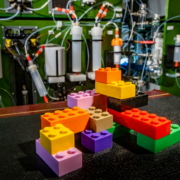


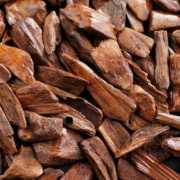
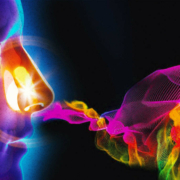

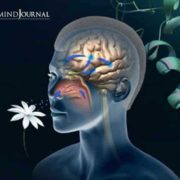
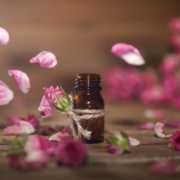











Leave a Reply
Want to join the discussion?Feel free to contribute!